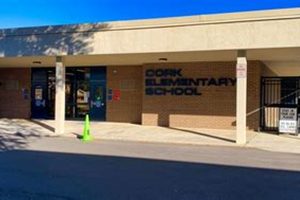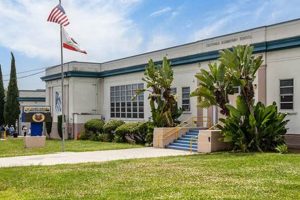Educational institutions designed for primary-aged students with learning, developmental, emotional, or physical disabilities offer specialized instruction and support services. These facilities often feature smaller class sizes, adapted curricula, and specially trained educators, therapists, and support staff to address individual student needs. For example, a school might offer tailored programs for students with autism spectrum disorder, dyslexia, or physical impairments.
Providing tailored educational experiences for students with disabilities is crucial for their academic, social, and emotional development. Such specialized environments foster a sense of belonging and empower students to reach their full potential. Historically, students with disabilities were often excluded from mainstream education. The evolution towards inclusive practices and specialized schools represents a significant step towards ensuring equitable educational opportunities for all children. This specialized approach enables educators to focus on individual learning styles and challenges, creating a more supportive and effective learning environment.
This article will further explore key aspects of selecting an appropriate educational setting for students with disabilities. Topics covered will include identifying individual student needs, evaluating school programs, understanding legal rights and resources, and navigating the enrollment process.
Tips for Selecting an Appropriate Educational Setting
Choosing the right educational environment for a child with disabilities is a crucial decision. These tips offer guidance for families navigating this process.
Tip 1: Early Intervention is Key: Begin the search process early to allow ample time for research, visits, and application procedures. Early intervention services can also be beneficial in preparing a child for school.
Tip 2: Assess Individual Needs: Carefully evaluate a child’s specific learning, developmental, and social-emotional needs. This assessment helps determine the most suitable learning environment and support services.
Tip 3: Research Available Programs: Thoroughly investigate programs offered by different schools, including curriculum, teaching methodologies, class sizes, and support staff qualifications.
Tip 4: Visit Potential Schools: On-site visits provide valuable insights into the school’s atmosphere, resources, and interactions between staff and students.
Tip 5: Inquire About Support Services: Understand the range of support services available, such as speech therapy, occupational therapy, counseling, and assistive technologies. Ensure these align with the child’s individual needs.
Tip 6: Consider Proximity and Transportation: Factor in the school’s location and available transportation options, ensuring accessibility and convenience for the family.
Tip 7: Communicate with School Staff: Openly communicate with teachers, administrators, and support staff to establish collaborative relationships and address any questions or concerns.
Tip 8: Understand Legal Rights and Resources: Familiarize yourselves with relevant laws and regulations regarding special education, including the right to an Individualized Education Program (IEP).
By following these tips, families can make informed decisions and select educational settings that best support their child’s unique learning journey.
These considerations are essential steps in ensuring a child with disabilities receives a quality education tailored to their specific requirements. The subsequent sections will delve deeper into the process of finding and enrolling in an appropriate program.
1. Specialized Curriculum
A specialized curriculum forms the cornerstone of effective education for students with disabilities. It addresses diverse learning needs and styles within these specialized elementary schools. Distinct from standard curricula, these adapted programs provide individualized pathways to academic, social, and emotional growth.
- Adaptive Learning Materials
Modified textbooks, assistive technologies, and hands-on activities cater to varied learning styles and abilities. For example, a student with dyslexia might utilize audio books and specialized software, while a visually impaired student might use Braille materials. These adaptations ensure accessible and engaging learning experiences.
- Individualized Education Programs (IEPs)
IEPs outline specific learning goals, accommodations, and support services tailored to each student’s unique needs. These legally mandated documents ensure individualized instruction and progress monitoring. An IEP might include modified assignments, extended time for tests, or assistive technology provisions, reflecting a student’s particular requirements.
- Focus on Functional Skills
Specialized curricula often emphasize practical life skills, such as communication, self-care, and social interaction, alongside academic subjects. This focus equips students with essential skills for independence and community integration. Learning to manage daily routines, navigate social situations, and advocate for personal needs are examples of crucial functional skills.
- Multi-Sensory Instruction
Engaging multiple senses through varied teaching methods caters to diverse learning preferences and enhances understanding. Incorporating visual aids, auditory prompts, and kinesthetic activities creates a richer learning environment. A lesson on weather might involve creating cloud models (kinesthetic), listening to rain sounds (auditory), and viewing weather charts (visual).
These facets of specialized curricula contribute significantly to the effectiveness of special needs elementary schools. By tailoring instruction and support to individual needs, these schools empower students with disabilities to achieve academic success, develop essential life skills, and thrive in inclusive environments.
2. Trained Educators
The effectiveness of special needs elementary schools hinges significantly on the expertise of trained educators. These professionals possess specialized knowledge and skills crucial for addressing the diverse learning, developmental, and behavioral needs of students with disabilities. This specialized training equips educators to implement individualized education programs (IEPs), adapt curricula, utilize assistive technologies, and manage diverse learning environments. For instance, a teacher trained in Applied Behavior Analysis (ABA) can effectively support a student with autism spectrum disorder by implementing strategies to improve communication and social skills. Similarly, educators with training in multisensory instruction can create engaging learning experiences for students with dyslexia or other learning differences. The presence of trained educators is a defining characteristic of effective special needs education.
Beyond academic instruction, trained educators in these settings play a pivotal role in fostering inclusive learning environments. Their understanding of child development, special education law, and individualized learning enables them to create supportive classrooms where every student feels valued and respected. They collaborate with parents, therapists, and other specialists to ensure a holistic approach to student support. For example, a teacher might work with an occupational therapist to adapt classroom activities to meet a student’s fine motor skill challenges. This collaborative approach maximizes student potential and promotes positive learning outcomes. The impact of trained educators extends beyond academic progress to encompass social-emotional growth and overall well-being.
Specialized teacher training is an essential investment in the success of special needs elementary schools. It equips educators to navigate the complexities of diverse learning needs, advocate for student rights, and create inclusive learning communities. The presence of skilled and knowledgeable educators is a key indicator of a school’s capacity to provide effective and equitable educational opportunities for students with disabilities. Challenges remain in ensuring adequate access to specialized training and resources for educators; however, the positive impact of trained educators underscores the importance of continued investment in this critical area. The quality and commitment of these professionals directly influence the ability of these schools to fulfill their mission of providing individualized support and maximizing student potential.
3. Support Services
Comprehensive support services are integral to the effectiveness of special needs elementary schools. These services complement specialized instruction and address the diverse range of learning, developmental, and behavioral needs present within these educational settings. Providing appropriate support is crucial for maximizing student potential and fostering inclusive learning environments. The availability and quality of these services significantly impact a school’s ability to meet the individualized needs of its students.
- Therapeutic Interventions
Schools often provide access to various therapies, including speech-language therapy, occupational therapy, physical therapy, and counseling. These services address specific developmental needs and help students improve communication, motor skills, emotional regulation, and social interaction. For example, a student with a speech impediment might receive regular sessions with a speech-language pathologist to improve articulation and fluency. Access to these interventions within the school setting enhances convenience and integration with educational programming.
- Assistive Technologies
Assistive technologies play a vital role in supporting students with disabilities by providing tools and strategies to access information, communicate effectively, and participate fully in educational activities. Examples include augmentative and alternative communication devices, adaptive software, and specialized learning materials. A student with dyslexia might use text-to-speech software to access written materials, while a student with mobility impairments might utilize adaptive keyboards and computer mice. The appropriate use of assistive technologies promotes independence and removes barriers to learning.
- Psychological and Counseling Services
Addressing social-emotional well-being is essential for students with disabilities. School-based psychologists and counselors provide support for emotional regulation, social skills development, and behavioral challenges. They work with students individually and in groups, providing strategies for coping with stress, anxiety, and social situations. These services contribute to a positive learning environment and promote overall student well-being. Counseling services can also help students develop self-advocacy skills and build resilience.
- Specialized Transportation
Many special needs elementary schools offer adapted transportation services to accommodate students with physical disabilities or other mobility challenges. These services ensure safe and accessible transportation to and from school, reducing barriers to participation and promoting equal access to education. Specialized transportation might include wheelchair-accessible buses, trained personnel to assist students during transit, and modified routes to accommodate individual needs. The availability of these services can be a significant factor for families when choosing a school.
The comprehensive integration of these support services within special needs elementary schools creates a holistic learning environment that fosters academic, social, and emotional growth. The availability and quality of these services are essential factors for families to consider when evaluating potential educational settings for their children. The effectiveness of these schools relies on the seamless integration of specialized instruction, tailored support, and a commitment to inclusive practices. By providing these resources, schools empower students with disabilities to achieve their full potential and thrive in inclusive educational settings. This interconnected approach to education recognizes that academic progress is intertwined with social-emotional well-being and access to appropriate support.
4. Accessible Facilities
Accessible facilities are fundamental to the efficacy of special needs elementary schools. Architectural design and environmental adaptations play a crucial role in ensuring equitable access to education and fostering an inclusive learning environment for students with diverse disabilities. The presence of appropriate facilities directly impacts a student’s ability to participate fully in educational activities, promoting independence and overall well-being.
- Ramps and Elevators
Ramps and elevators are essential for students with mobility impairments, ensuring access to all areas of the school building. These features eliminate physical barriers and promote independent navigation within the school environment. The presence of ramps and elevators allows students using wheelchairs or other mobility aids to participate fully in classroom activities, access library resources, and engage in social interactions with peers. Their availability is a basic requirement for compliance with accessibility standards.
- Adapted Bathrooms
Adapted bathrooms, equipped with grab bars, accessible sinks, and wider doorways, cater to the specific needs of students with physical disabilities. These modifications ensure safe and independent use of restroom facilities, promoting dignity and self-reliance. Features like adjustable-height changing tables also accommodate students with more significant physical limitations. The availability of accessible bathrooms is a critical aspect of creating an inclusive and supportive school environment.
- Sensory Rooms
Sensory rooms provide a regulated environment for students with sensory processing sensitivities, often associated with autism spectrum disorder or other developmental disabilities. These spaces offer controlled lighting, tactile materials, and calming sounds, allowing students to regulate their sensory input and manage emotional responses. Sensory rooms can help students de-escalate from heightened emotional states, focus their attention, and engage more effectively in learning activities. The inclusion of sensory rooms reflects a growing understanding of the importance of sensory regulation in supporting students with diverse needs.
- Accessible Playgrounds
Accessible playgrounds provide opportunities for all students to engage in physical activity and social interaction. Features like ramps, adaptive swings, and sensory play equipment allow students with disabilities to participate alongside their peers. Inclusive playground design fosters social inclusion and promotes physical development for all students. The presence of accessible playgrounds demonstrates a commitment to creating a truly inclusive school environment that values the participation of every student.
The thoughtful design and implementation of accessible facilities are essential components of effective special needs elementary schools. These adaptations create a barrier-free environment that promotes independence, fosters inclusion, and supports the diverse learning needs of all students. The presence of accessible facilities is not merely a matter of compliance with regulations, but a reflection of a school’s commitment to creating an equitable and supportive learning environment for every child. By prioritizing accessibility, these schools empower students with disabilities to participate fully in all aspects of the educational experience and reach their full potential.
5. Individualized Learning
Individualized learning forms the cornerstone of effective education within special needs elementary schools. Recognizing that students with disabilities possess unique learning styles, strengths, and challenges, these schools prioritize tailoring instruction and support to meet individual needs. This approach contrasts sharply with traditional, one-size-fits-all educational models. Individualized learning recognizes that a student with autism may require different instructional strategies than a student with dyslexia, and tailors educational experiences accordingly. The effectiveness of special needs elementary schools depends significantly on their ability to implement truly individualized learning programs. This approach fosters academic progress, promotes self-advocacy skills, and builds student confidence.
The practical application of individualized learning manifests in various ways within these specialized educational settings. Individualized Education Programs (IEPs) serve as roadmaps for personalized instruction, outlining specific learning goals, accommodations, and support services tailored to each student. For example, a student with ADHD might benefit from a structured learning environment with frequent breaks, while a student with a visual impairment might require large-print materials and assistive technologies. Furthermore, flexible grouping strategies, differentiated instruction, and ongoing progress monitoring ensure that educational experiences are responsive to evolving student needs. A teacher might use a combination of visual aids, auditory prompts, and hands-on activities to cater to diverse learning styles within a single classroom. The commitment to individualized learning ensures that each student receives the targeted support necessary to reach their full potential.
Implementing individualized learning presents unique challenges, including the need for specialized teacher training, adequate resources, and effective collaboration among educators, therapists, and families. However, the demonstrable benefits of this approach underscore its crucial role in special needs education. Students who receive individualized instruction experience greater academic gains, improved self-esteem, and increased independence. The focus on individual strengths and needs empowers students to become active participants in their learning journey and prepares them for success in future educational endeavors and life beyond the classroom. The ongoing development and refinement of individualized learning strategies remain critical for enhancing the effectiveness of special needs elementary schools and ensuring equitable educational opportunities for all students.
6. Inclusive Environment
Inclusive environments within special needs elementary schools represent a fundamental shift from traditional segregation towards fostering a sense of belonging and community for all students. These environments recognize the inherent value of diversity and strive to create a welcoming atmosphere where students with and without disabilities learn and grow together. Creating a truly inclusive environment requires a multifaceted approach encompassing physical accessibility, curricular adaptations, social integration, and a culture of acceptance and respect. The success of these schools depends significantly on their ability to cultivate inclusive practices that benefit all students.
- Social Integration
Opportunities for social interaction between students with and without disabilities are crucial for fostering empathy, understanding, and acceptance. Shared activities, collaborative projects, and peer support programs promote social inclusion and break down barriers. For example, students without disabilities might participate in buddy programs, assisting students with disabilities during classroom activities or on the playground. These interactions create opportunities for mutual learning and social-emotional growth, benefiting all students involved. Social integration cultivates a sense of community and belonging within the school environment.
- Curricular Adaptations
Adapting curricula to accommodate diverse learning needs ensures that all students can access and engage with educational content. Differentiated instruction, flexible grouping strategies, and the use of assistive technologies create learning opportunities that cater to individual strengths and challenges. For example, a teacher might offer different levels of reading material on the same topic to accommodate students with varying reading abilities. This approach allows all students to participate in the same learning experience while receiving individualized support. Curricular adaptations promote equitable access to education and ensure that no student is left behind.
- Accessibility Beyond the Physical
While physical accessibility is essential, creating a truly inclusive environment requires addressing accessibility beyond the physical realm. This includes providing accessible learning materials, utilizing assistive technologies, and adapting teaching methods to cater to diverse learning styles and sensory needs. For example, a teacher might use visual aids and graphic organizers to support students who benefit from visual learning, or provide audio recordings of texts for students with auditory processing challenges. Addressing these non-physical aspects of accessibility ensures that all students can access and engage with the curriculum effectively.
- Culture of Acceptance and Respect
Fostering a culture of acceptance and respect is paramount to creating an inclusive environment. This involves promoting positive attitudes towards disability, challenging stereotypes, and celebrating diversity. School-wide initiatives, such as anti-bullying campaigns, disability awareness programs, and inclusive classroom practices, contribute to creating a welcoming and supportive atmosphere for all students. Educators play a key role in modeling respectful behavior and fostering a sense of belonging for every student. Creating a culture of acceptance and respect requires ongoing effort and commitment from all members of the school community.
These interconnected facets of inclusive environments contribute significantly to the success of special needs elementary schools. By fostering a sense of belonging, celebrating diversity, and providing equitable access to education, these schools create learning communities where all students can thrive. The commitment to inclusion extends beyond the classroom, influencing school-wide policies, extracurricular activities, and interactions among students, staff, and families. The creation of truly inclusive environments requires ongoing evaluation, adaptation, and a shared commitment to ensuring that every student feels valued, respected, and empowered to reach their full potential.
7. Proximity
The proximity of a special needs elementary school significantly impacts families. Locating a suitable school near one’s home or workplace reduces travel time and associated burdens, allowing for greater family involvement in a child’s education. This convenience allows parents to participate more actively in school events, meetings, and therapies, fostering stronger home-school connections crucial for a child’s development. The following facets explore the various implications of proximity in the context of special needs education.
- Reduced Travel Stress
Shorter commutes minimize travel-related stress for students, particularly those with sensory sensitivities or medical conditions that make long journeys challenging. A child with autism, for example, might experience heightened anxiety during extended travel. A nearby school reduces this stress, allowing the child to arrive at school relaxed and ready to learn. This advantage contributes to a more positive and productive school experience for the student.
- Increased Family Involvement
Proximity facilitates greater family involvement in school activities and communication with educators. Parents can more readily attend school events, parent-teacher conferences, and therapy sessions integrated into the school day. This increased presence strengthens the partnership between home and school, fostering a collaborative approach to supporting the child’s educational journey. This active participation benefits the child by ensuring consistent communication and coordinated efforts between parents and educators.
- Enhanced Emergency Response
In the event of a medical emergency or unexpected situation, a school’s proximity allows for quicker response times from family members or designated caregivers. This rapid response can be particularly crucial for students with complex medical needs or those prone to seizures or other health-related episodes. The peace of mind provided by knowing the school is nearby alleviates parental anxiety and ensures a swift response in critical situations. This enhanced sense of security benefits both students and their families.
- Community Integration
Choosing a school within one’s community fosters a sense of belonging and connection. Students can engage more easily in local activities, interact with community members, and develop a stronger sense of place. This community integration promotes social inclusion and extends the learning environment beyond the school walls. For students with disabilities, this connection to the community can be particularly valuable in fostering independence and social skills development. The proximity of the school plays a significant role in facilitating these connections.
These factors highlight the significant impact of proximity when selecting a special needs elementary school. While curriculum, support services, and school environment remain paramount, the logistical aspect of proximity significantly influences the overall experience for both the student and their family. Finding the right balance between these critical factors is essential for ensuring a positive and successful educational journey. A nearby school that also meets a child’s individual learning and support needs contributes significantly to their overall well-being and academic progress.
Frequently Asked Questions
This section addresses common inquiries regarding the selection of specialized elementary educational settings for students with disabilities. Understanding these key aspects can assist families in making informed decisions.
Question 1: How does one determine if a specialized educational setting is appropriate for a child?
Several factors indicate the potential need for a specialized setting. These include significant academic delays despite interventions in a general education classroom, diagnosed disabilities impacting learning or behavior, and recommendations from educators or healthcare professionals. A comprehensive evaluation of the child’s individual needs is essential.
Question 2: What is the role of an Individualized Education Program (IEP)?
An IEP outlines specific learning goals, accommodations, and support services tailored to the student’s unique needs. It is a legally binding document developed collaboratively by parents, educators, and specialists. The IEP guides the student’s educational program and ensures appropriate support.
Question 3: How can parents effectively advocate for their child’s needs within a specialized school?
Open communication with teachers, administrators, and support staff is essential. Parents should actively participate in IEP meetings, ask questions, express concerns, and advocate for necessary resources and accommodations. Maintaining ongoing communication fosters collaborative partnerships and ensures the child’s needs are effectively addressed.
Question 4: What are the potential benefits of smaller class sizes in specialized schools?
Smaller class sizes allow for more individualized attention from teachers and support staff. This increased individualization facilitates targeted instruction, personalized support, and closer monitoring of student progress. Smaller classes can also create a more nurturing and less overwhelming learning environment for students with disabilities.
Question 5: Are specialized schools equipped to address a wide range of disabilities?
Specialized schools often cater to a diverse range of disabilities, including learning disabilities, developmental delays, autism spectrum disorder, emotional and behavioral disorders, and physical impairments. However, it is essential to research specific programs and confirm a school’s expertise in addressing the child’s particular disability. Not all specialized schools offer programs for every type of disability.
Question 6: How does the transition process from a general education setting to a specialized school work?
Transitioning to a specialized school involves a collaborative process between the sending school, the receiving school, and the child’s family. This process often includes information sharing, IEP review, school visits, and meetings to ensure a smooth transition and minimize disruption for the student. Open communication and collaboration among stakeholders are essential for a successful transition.
Finding the right educational setting requires careful consideration of individual needs and available resources. Research, open communication, and collaboration with educational professionals are crucial steps in this process.
This information provides a foundation for navigating the complexities of special needs education. Further resources and support are available to assist families in making informed decisions tailored to their childs unique circumstances. The next section will explore these resources.
Locating Appropriate Support
Selecting an appropriate elementary school for children with disabilities requires careful consideration of various factors. This exploration has highlighted the importance of specialized curricula, trained educators, comprehensive support services, accessible facilities, individualized learning approaches, inclusive environments, and the practical implications of proximity. Each element contributes significantly to a supportive and effective learning experience, empowering students with disabilities to reach their full potential.
Prioritizing these key elements contributes to creating nurturing educational environments where students with disabilities can thrive academically, socially, and emotionally. Continued advocacy for inclusive practices and appropriate resource allocation remains essential for ensuring equitable access to quality education for all children. Investing in specialized educational settings provides not only immediate benefits for individual students but also fosters a more inclusive and equitable society for the future.







